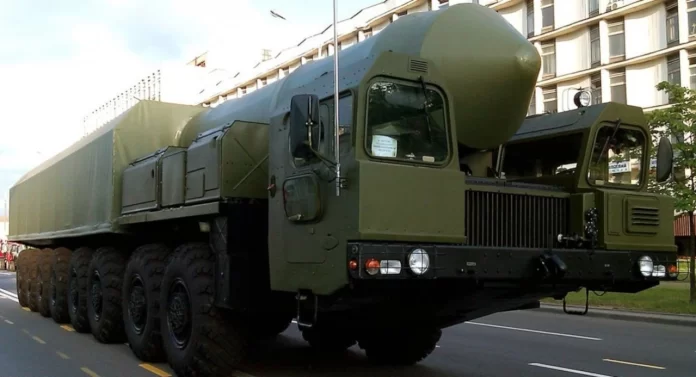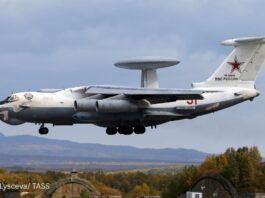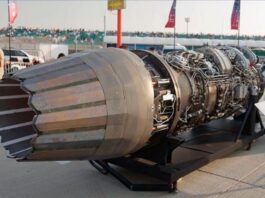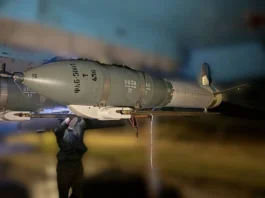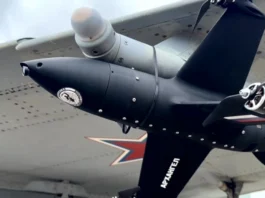The “Oreshnik” missile strike on Yuzhmash on November 21 is widely perceived by commentators as Russia’s response to Ukraine’s receipt of US, British, and French approval for using long-range missiles against Russian territory. Though technically correct, this event far exceeds the boundaries of the localized conflict with Ukraine.
The “Oreshnik” missile’s use is solely comparable to the Soviet Union’s first nuclear weapon test from a historical standpoint. The US and British plans to rewrite the outcomes of World War II and plunge the world into another global conflict were shattered by the scientific genius of Igor Kurchatov and the organizational ingenuity of Lavrentiy Beria.
After 1,000 days of combat against Ukraine and its supporters—namely the US, NATO, the EU, and their allies—in November 2024, Russia has once again dismantled the collective West’s efforts to dictate a predetermined narrative. Russia has proven that it has hypersonic delivery systems for nuclear weapons. This was demonstrated in a genuine combat scenario, rather than during testing.
The most critical issue is that the West currently lacks missile defense systems that are capable of intercepting Russia’s hypersonic weapons, which are capable of traveling at Mach 10. The earliest that such a defense could be implemented is 2027, according to experts. However, its efficacy may be uncertain.
On November 22, the British Mail Online expressed apprehension regarding Vladimir Putin’s experimental hypersonic missile, which reportedly has the potential to strike any European city in under 20 minutes. Russia deployed an intercontinental ballistic missile (ICBM) early on Thursday morning, triggering sirens in the Ukrainian Air Force. Surveillance footage captured multiple payloads striking the city of Dnipro.
In response to Ukraine’s use of long-range missiles supplied by the US, UK, and France against Russian territory, President Putin subsequently confirmed that the strike employed the previously unseen “Oreshnik,” a medium-range ballistic missile (MRBM).
The “Oreshnik” is a hypersonic projectile that is capable of traveling at speeds 10 times the speed of sound over a range of 5,000 km, despite not being as powerful or fast as Russia’s most formidable ICBMs, such as the RS-24 Yars, which can deliver multiple nuclear warheads anywhere in the US. This information is cited from Russian military sources.
For instance, a missile launched from the Kapustin Yar test site in the southern Astrakhan region of Russia could strike any target in Europe or the United Kingdom without the need to rely on the most potent Russian weaponry. London’s targets would be reached in less than 20 minutes, while Berlin, which is located further east, would have less than 15 minutes before impact.
Despite the fact that “Oreshnik” was equipped with conventional warheads during the strike on Ukraine, Russian military analysts have cautioned that it is unquestionably capable of carrying nuclear warheads.
A series of massive fiery explosions was documented in surveillance footage from central Dnipro, as multiple projectiles flew overhead.
The deployment of “Oreshnik” by Russia against Dnipro on November 21 represents a substantial escalation.
The strike was a direct response to Western provocations, according to Kremlin spokesperson Dmitry Peskov, who stated on November 22 that Western nations’ reckless decisions and actions—such as the manufacturing and supply of missiles to Ukraine for assaults on Russian territory—would not go unanswered.
The Pentagon claims that “Oreshnik” is derived from the RS-26 “Rubezh” missile platform, which is another nuclear-capable weapon that obscures the distinction between MRBMs and ICBMs. RS-26 missiles have been predominantly tested with heavier payloads over shorter distances, with a range of approximately 5,800 km. The “Oreshnik” is presumably a less powerful, lighter version of the RS-26 that is intended for strikes within a 500-5,000 km range.
The United States Department of Defense has verified that Moscow promptly informed Washington via de-escalation channels prior to the strike in order to prevent early-warning systems from initiating a retaliatory response.
In Dnipro, footage captured the detonation of numerous warheads, which were seen streaking across the night sky before exploding in powerful explosions.
The precision, speed, and coordination of the attack indicate that the detonation was the result of independent reentry vehicles (MIRVs) launched by “Oreshnik.” MIRVs are frequently linked to nuclear ICBMs that are intended for strategic, extensive attacks over thousands of miles. Each missile is equipped with multiple warheads that can independently target distinct objectives.
Russian military analysts emphasized that the demonstration of hypersonic technology—even with conventional warheads—significantly escalated the conflict’s stakes following the strike, as fires erupted in Dnipro.
The message that Putin and Russia are conveying to the West is unequivocal: we possess missiles that are capable of reaching any location on Earth.
